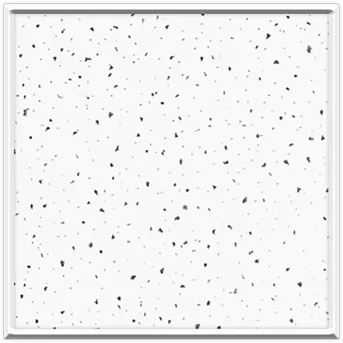Nov . 23, 2024 03:41 Back to list
mineral fibre ceiling
Understanding Mineral Fibre Ceilings Benefits and Considerations
Mineral fibre ceilings have gained popularity in both commercial and residential construction due to their myriad benefits, including acoustic performance, fire resistance, and thermal insulation. Made primarily from natural and synthetic materials such as glass, stone, or other mineral-based substances, these ceilings offer a versatile and effective solution for various building needs.
One of the most significant advantages of mineral fibre ceilings is their acoustic performance. With urban environments becoming increasingly noisy, soundproofing has become a critical consideration in architectural design. Mineral fibre ceilings are engineered to absorb sound effectively, thus reducing noise levels within a space. This feature is particularly valuable in settings such as offices, schools, and healthcare facilities, where a quiet environment fosters productivity, learning, and patient recovery.
In addition to sound absorption, mineral fibre ceilings boast excellent fire-resistant properties. Fire safety is a crucial concern in building design, and mineral fibre materials are inherently non-combustible, meaning they do not contribute to the spread of flames. Many products comply with stringent fire safety standards, providing peace of mind for building occupants and owners alike. When installed properly, these ceilings can help contain fires and offer additional time for evacuation, thereby enhancing overall safety in a building.
mineral fibre ceiling

Thermal insulation is another compelling feature of mineral fibre ceilings. Due to their structural composition, these ceilings can help regulate indoor temperatures by reducing heat transfer. This benefit not only contributes to the overall comfort of a space but can also lead to significant energy savings. By improving a building's thermal efficiency, mineral fibre ceilings can lower heating and cooling costs, making them an economically sound choice for property owners looking to manage operational expenses.
However, while mineral fibre ceilings have numerous advantages, there are important considerations to bear in mind. Installation quality plays a crucial role in the ceiling's performance, so hiring skilled professionals is essential. Poor installation can lead to issues such as sagging, ineffective sound absorption, and reduced fire resistance. Additionally, like all materials, mineral fibre ceilings may be susceptible to moisture and mold if not properly maintained. Regular inspections and timely repairs are necessary to ensure longevity and performance, especially in areas with high humidity.
Furthermore, when selecting mineral fibre ceilings, it's important to consider the environmental impact of the materials used. Many manufacturers now offer sustainable options, utilizing recycled content and low-VOC materials that contribute to healthier indoor air quality. Choosing eco-friendly products not only enhances sustainability but also aligns with the growing demand for green building practices.
In conclusion, mineral fibre ceilings present a multifaceted approach to addressing modern building challenges. With their exceptional acoustic properties, fire resistance, and thermal insulation, they are an ideal choice for a variety of applications. However, careful consideration regarding installation, maintenance, and environmental impact is essential to fully harness their benefits. As architects and builders continue to fine-tune their designs, mineral fibre ceilings will likely remain a staple in creating efficient, safe, and conducive environments.
-
Durable Ceiling T Grid Systems | Easy InstallationNewsAug.29,2025
-
PVC Gypsum Ceiling: Durable, Laminated Tiles for Modern SpacesNewsAug.28,2025
-
Pvc Gypsum Ceiling Is DurableNewsAug.21,2025
-
Mineral Fiber Board Is DurableNewsAug.21,2025
-
Ceiling Tile Clip Reusable DesignNewsAug.21,2025
-
Ceiling T Grid Modular DesignNewsAug.21,2025







